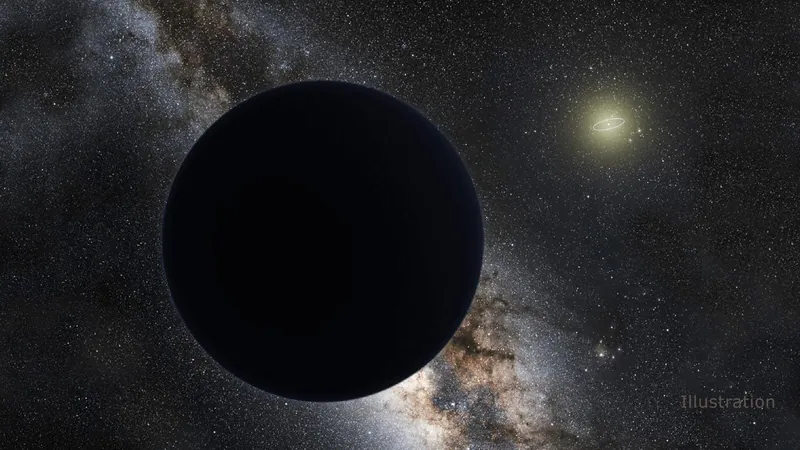
Astronomers May Be on the Verge of Discovering the Elusive ‘Planet Nine’!
2025-05-21
Author: Benjamin
The Search for the Solar System’s Mysterious Ninth Planet
Exciting news from Taiwan: scientists are honing in on a potential ninth planet in our solar system, often referred to as ‘Planet Nine’ or ‘Planet X.’ Recent analysis of archival images from defunct infrared telescopes suggests they might be closer than ever to uncovering this astronomical enigma.
What’s the Buzz About Planet Nine?
For years, the solar system has been considered a collection of eight planets: Mercury, Venus, Earth, Mars, Jupiter, Saturn, Uranus, and Neptune. The demotion of Pluto to a dwarf planet in 2006 left space enthusiasts yearning for a new celestial body to fill the void. Some astronomers theorize that Planet Nine resides in the distant, mysterious Kuiper Belt, a region filled with icy bodies, including Pluto. This hypothetical planet is estimated to orbit about 20 times farther from the Sun than Neptune.
Strange Orbits: Evidence of Planet Nine?
An intriguing clue lies in the peculiar clustering of several small celestial objects in the Kuiper Belt, such as Sedna and 2012 VP113. These bodies exhibit similar, elongated orbits that suggest they might be influenced by the gravitational pull of an unseen planet. However, locating Planet Nine poses a challenge; its orbit lies far beyond Neptune, making it difficult to detect and confirm.
New Findings from Old Data
A groundbreaking yet unreviewed paper sheds light on possible evidence for Planet Nine using archival data from NASA’s IRAS and Japan’s AKARI telescopes. The researchers, Terry Long Phan and Tomotsugu Goto from National Tsing Hua University, discovered potential candidate objects in these historical datasets. Notably, these candidates were absent in previous scans, indicating movement that aligns with the expected distance of Planet Nine.
Caution Among the Experts
While excitement brews within the scientific community, skepticism remains. Notably, Michael Brown, a prominent planetary astronomer, emphasizes the need for more data points to validate these findings. He remains cautious, suggesting that the evidence, although promising, is not yet definitive.
Enter the Vera C. Rubin Observatory!
Hope for discovering Planet Nine reignites with the upcoming launch of the Vera C. Rubin Observatory. This state-of-the-art facility, set to begin operations soon, boasts the world’s largest digital camera capable of capturing high-resolution images every 39 seconds over a decade. If Planet Nine truly exists, the observatory is expected to spot it soon. Brown confidently asserts that this observatory has the potential to locate the elusive planet within the next 18 months.
The mystery of Planet Nine continues to captivate astronomers and enthusiasts alike. As we await groundbreaking discoveries, we wish for clear skies and endless curiosity!









 Brasil (PT)
Brasil (PT)
 Canada (EN)
Canada (EN)
 Chile (ES)
Chile (ES)
 Česko (CS)
Česko (CS)
 대한민국 (KO)
대한민국 (KO)
 España (ES)
España (ES)
 France (FR)
France (FR)
 Hong Kong (EN)
Hong Kong (EN)
 Italia (IT)
Italia (IT)
 日本 (JA)
日本 (JA)
 Magyarország (HU)
Magyarország (HU)
 Norge (NO)
Norge (NO)
 Polska (PL)
Polska (PL)
 Schweiz (DE)
Schweiz (DE)
 Singapore (EN)
Singapore (EN)
 Sverige (SV)
Sverige (SV)
 Suomi (FI)
Suomi (FI)
 Türkiye (TR)
Türkiye (TR)
 الإمارات العربية المتحدة (AR)
الإمارات العربية المتحدة (AR)